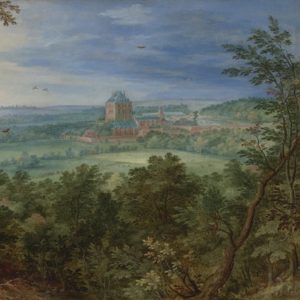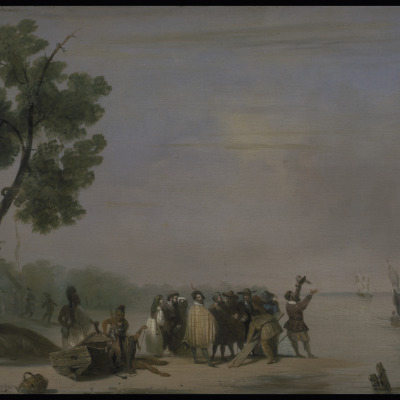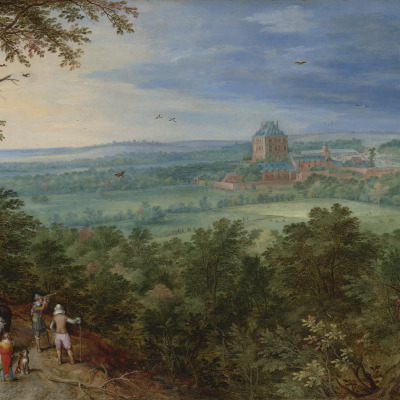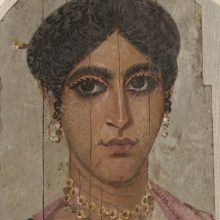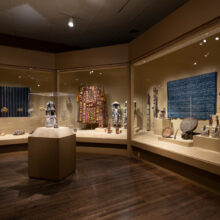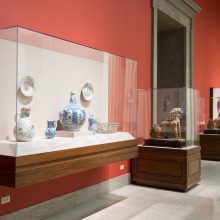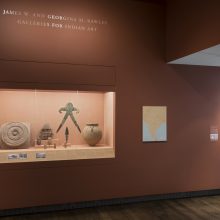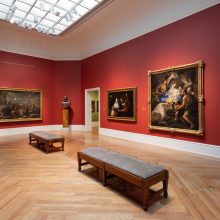For the last four hundred years, the gripping story of the first permanent English foothold in the New World has inspired American artists. John Gadsby Chapman painted this romanticized scene of Jamestown colonists and a group of Virginia Indians in 1841. The inscription on the beached boat to the left is “Hope of James Towne,” while a notation on the back of the panel reads “Old Times in the New World.”
By age nineteen, Chapman was painting professionally and attending the Pennsylvania Academy of Fine Arts. He traveled to Rome and Florence for further study in 1828. Although his biblical scenes enjoyed success in Italy, he turned to subjects that celebrated the American past after returning home in 1831. Chapman spent some years painting portraits and landscapes in Virginia before settling in New York City in 1834, where he became a member of the National Academy of Design.
During his distinguished career, he produced a number of other paintings that relate to the history of Jamestown. These included The Crowning of Powhatan, The Warning of Powhatan, and The Baptism of Pocahontas, the last commissioned by the U.S. government for the Rotunda of the Capitol and unveiled in 1840.
